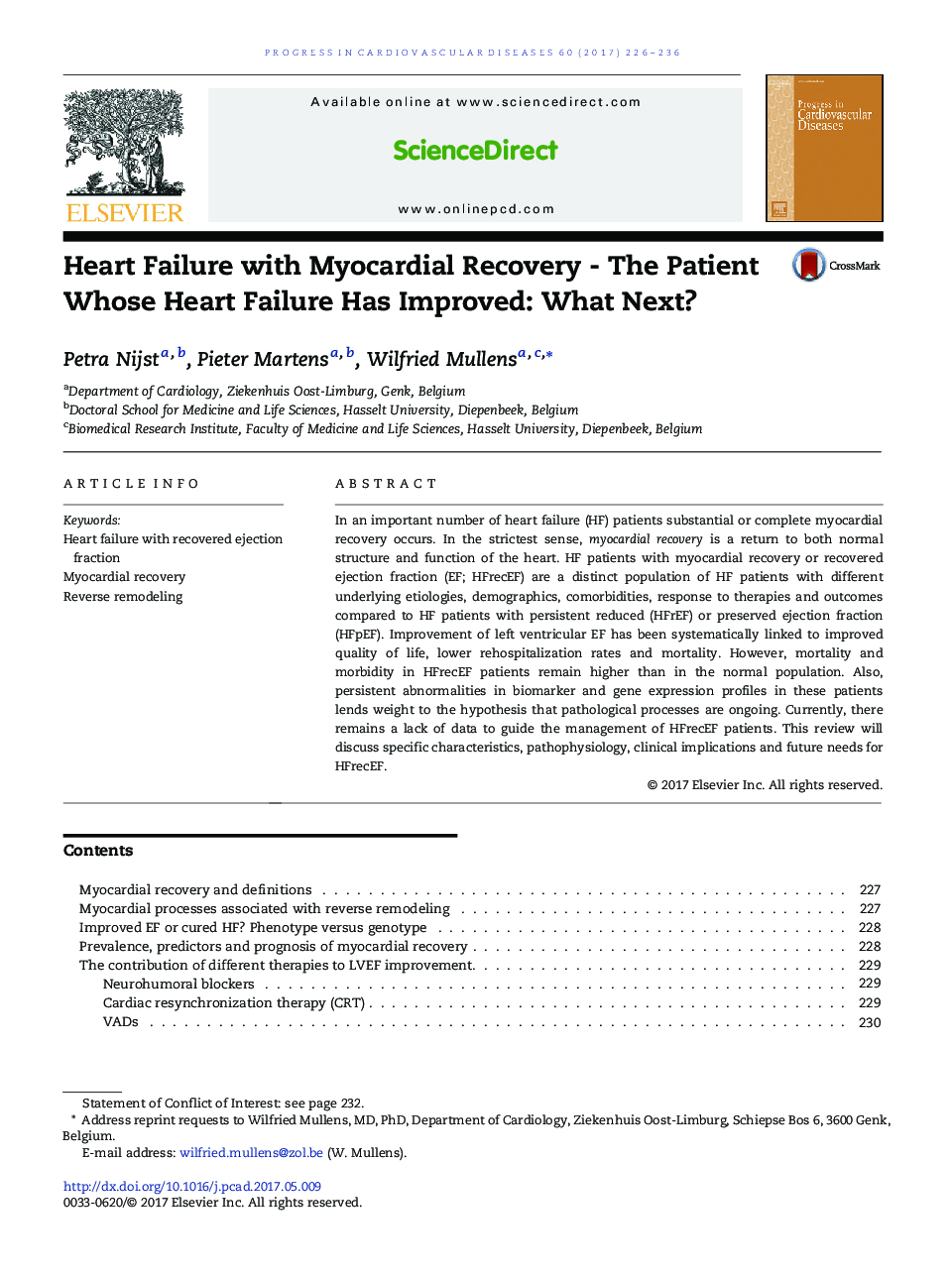| Article ID | Journal | Published Year | Pages | File Type |
|---|---|---|---|---|
| 5619582 | Progress in Cardiovascular Diseases | 2017 | 11 Pages |
In an important number of heart failure (HF) patients substantial or complete myocardial recovery occurs. In the strictest sense, myocardial recovery is a return to both normal structure and function of the heart. HF patients with myocardial recovery or recovered ejection fraction (EF; HFrecEF) are a distinct population of HF patients with different underlying etiologies, demographics, comorbidities, response to therapies and outcomes compared to HF patients with persistent reduced (HFrEF) or preserved ejection fraction (HFpEF). Improvement of left ventricular EF has been systematically linked to improved quality of life, lower rehospitalization rates and mortality. However, mortality and morbidity in HFrecEF patients remain higher than in the normal population. Also, persistent abnormalities in biomarker and gene expression profiles in these patients lends weight to the hypothesis that pathological processes are ongoing. Currently, there remains a lack of data to guide the management of HFrecEF patients. This review will discuss specific characteristics, pathophysiology, clinical implications and future needs for HFrecEF.
